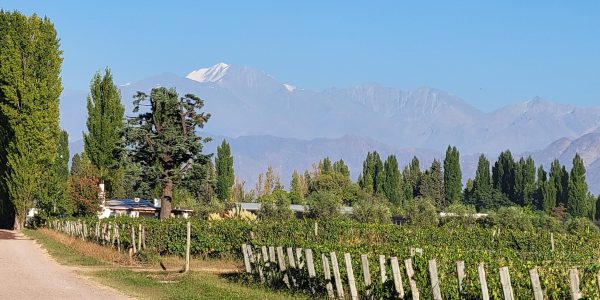Picture this: you’re standing atop a rugged mountain, a vineyard sprawling at your feet, and a glass of wine in your hand. It’s a scene that combines nature’s grandeur with the craftsmanship of winemaking. But why do we find some of the world’s most exceptional wines in such lofty locales? The answer lies in the remarkable relationship between altitude and grape cultivation.
Higher altitudes, where the air is thinner and temperature fluctuations are more extreme, offer a unique environment for grapevines. The stress these conditions place on the vines can be a winemaker’s secret weapon. It leads to the production of smaller, more concentrated grapes, which, in turn, can result in wines boasting higher acidity, more pronounced aromas, and greater complexity.
But that’s not all. At higher altitudes, grapes receive an extra dose of UV radiation, causing their skins to thicken. These robust skins contribute to wines that are not only structured but also intensely flavorful. When you sip a wine from a mountainous region, you’re tasting the culmination of these factors, a harmonious symphony of flavors that defines the term “fresh and complex.”
So, what’s with the temperature fluctuations in these lofty vineyards? Well, they play a pivotal role in crafting wines that are truly exceptional. The magic lies in something called “diurnal temperature variation.” It’s a fancy way of describing the daily temperature swings between warm, sunny days and cool, crisp nights.
This natural rhythm in the vineyard slows down the grape ripening process. Imagine grapes ripening at their own leisurely pace, soaking in the essence of their surroundings. The result is a greater concentration of flavor compounds and preserved acidity, essential for a well-balanced wine. These temperature fluctuations even contribute to the development of those fine-grained tannins that give wine its structure and aging potential.
Now, let’s talk thin air. Mountain air, at higher altitudes, possesses its own set of charms. First, it often carries lower humidity levels and fewer pests and diseases, reducing the stress on grapevines and making for healthier crops.
Second, cooler temperatures at these heights extend the growing season. This leisurely pace allows grapes to develop complex flavors and aromas, elevating the quality of the fruit.
Third, the increased exposure to direct sunlight on mountainsides facilitates efficient photosynthesis in grape leaves, resulting in better sugar accumulation and flavor development.
Fourth, the cool air helps grapes retain higher levels of natural acidity, a crucial element in crafting wines with a well-balanced taste profile.
Finally, the thin air and cooler temperatures lead to smaller grape clusters and berries, intensifying the concentration of flavors and aromatic compounds.
This combination of reduced disease pressure, extended growing seasons, increased sun exposure, balanced acidity, and intense aromatics makes mountainous regions the perfect backdrop for cultivating high-quality grapes. The result? Wines that capture the essence of their terroir and elevate the art of winemaking to new heights. So, the next time you savor a fine wine from the mountains, remember that it’s not just a libation – it’s a journey through nature’s grand amphitheater, where grapes and altitude create a symphony for your senses. Cheers to the magic of mountain wines!




